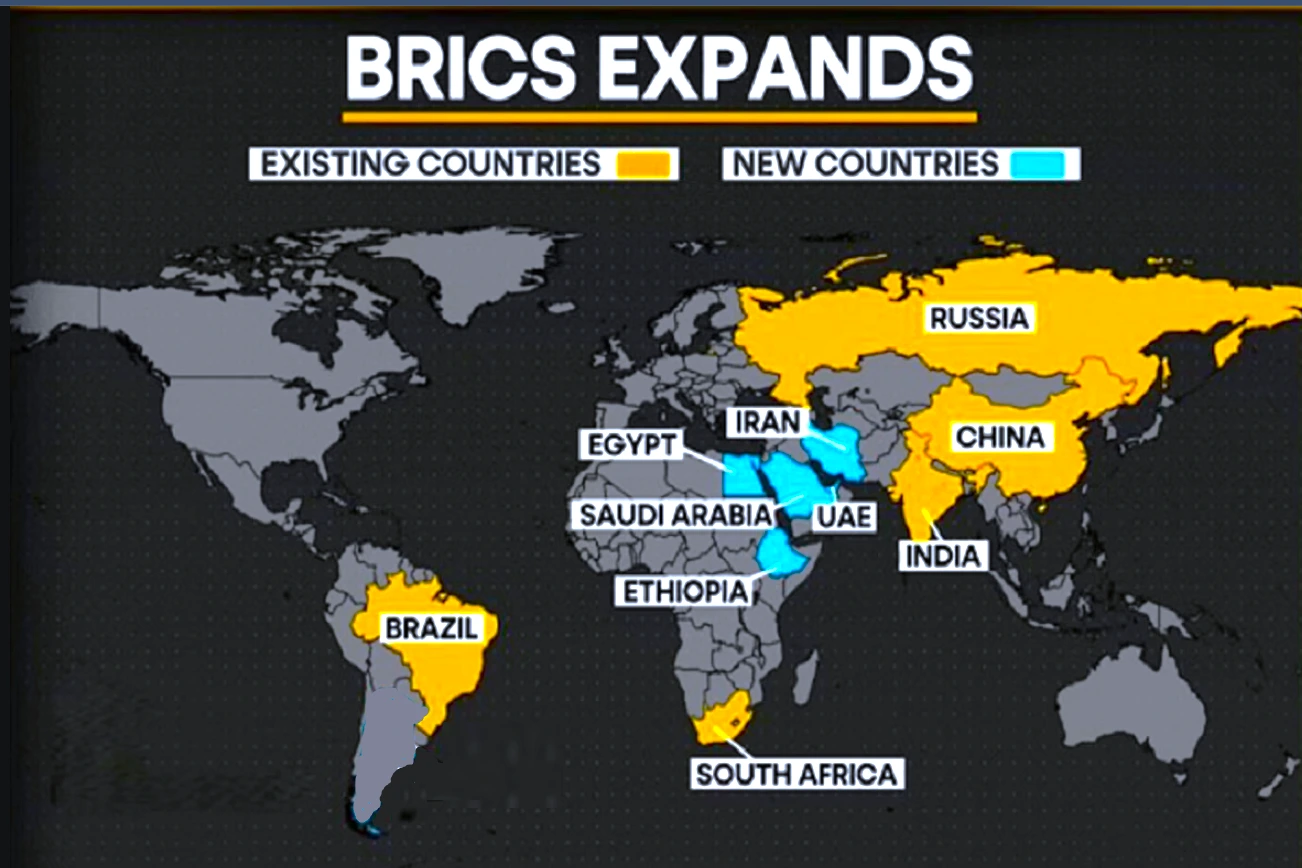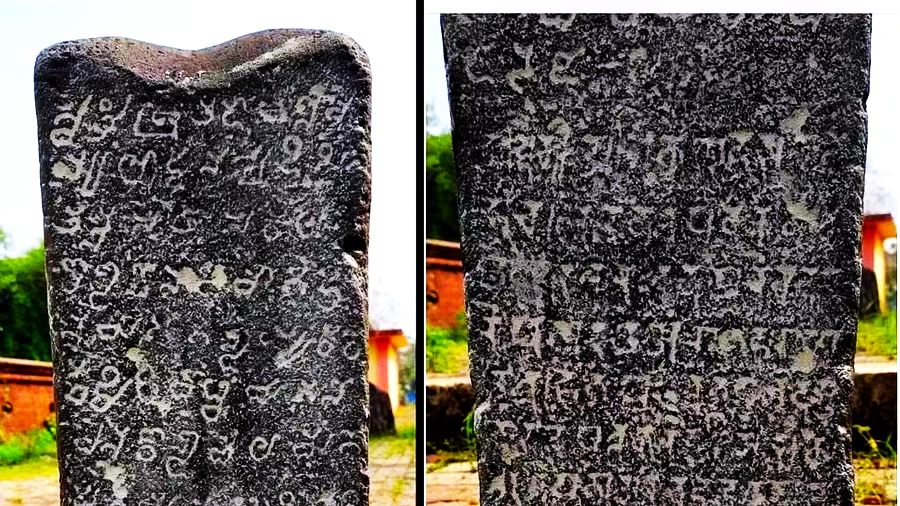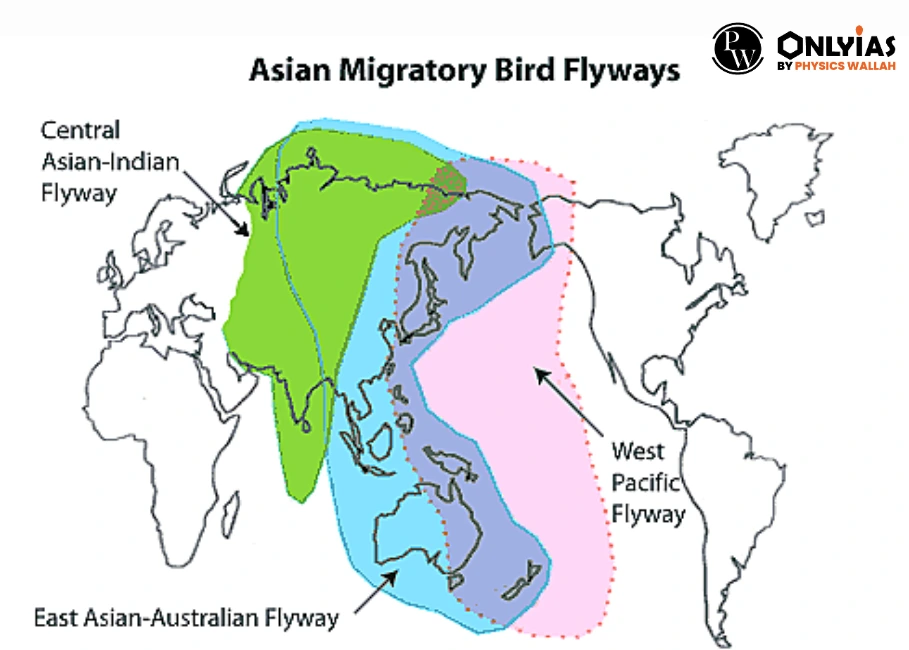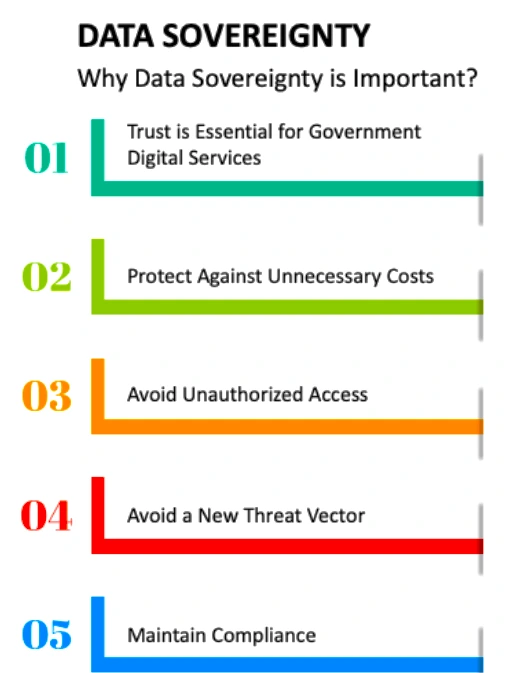Context: The five new candidates of BRICS formally became members on January 1, 2024.
 Argentina has decided to withdraw from its planned entry into the expanding BRICS club of nations.
Argentina has decided to withdraw from its planned entry into the expanding BRICS club of nations.Further Reading: Argentina Formally Rejects BRICS Membership
News Source: Reuters
|
Must Read |
|
| NCERT Notes For UPSC | UPSC Daily Current Affairs |
| UPSC Blogs | UPSC Daily Editorials |
Context: Justice BR Gavai has been nominated as the Chairman of the Supreme Court Legal Services Committee (SCLSC) after replacing Justice Sanjiv Khanna.
Must Read: Centre Appoints Arvind Panagariya As Chairman of 16th Finance Commission
News Source: Indian Express
|
Must Read |
|
| NCERT Notes For UPSC | UPSC Daily Current Affairs |
| UPSC Blogs | UPSC Daily Editorials |
Context: The ‘SMART 2.0’ program has been launched by the Central Council for Research in Ayurvedic Sciences (CCRAS) along with National Commission for Indian System of Medicine (NCISM).
About Diabetes mellitus (DM)
About National Commission For Indian System Of Medicine(NCISM)
About Central Council for Research in Ayurvedic Sciences (CCRAS)
|
|---|
Also Read: Casgevy Therapy
News Source: PIB
|
Must Read |
|
| NCERT Notes For UPSC | UPSC Daily Current Affairs |
| UPSC Blogs | UPSC Daily Editorials |
Context: An integrated web portal for educational institutes in the country developed by ERNET India was launched by the Ministry of Electronics & Information Technology (MeitY).
S3WaaS is a cloud service developed for government entities to generate Secure, Scalable & Sugamya (Accessible) websites.
|
|---|
Also Read: Section 67 IT Act
News Source: PIB
|
Must Read |
|
| NCERT Notes For UPSC | UPSC Daily Current Affairs |
| UPSC Blogs | UPSC Daily Editorials |
Context: Recently, the Similipal Kai Chutney made with kai pimpudi (red weaver ants) by the tribal people of Odisha’s Mayurbhanj district received the geographical identity tag.
About Geographical Indication (GI) Tag:
To read more on GI Tag, click here. |
|---|
News Source: Down to Earth
|
Must Read |
|
| NCERT Notes For UPSC | UPSC Daily Current Affairs |
| UPSC Blogs | UPSC Daily Editorials |
Context: An inscription written in kannada and sanskrit has been discovered in the Mahadeva temple at Cacoda in southern Goa.
 It is in the literary style of the Talangre inscription of Jayasimha I of the same period.
It is in the literary style of the Talangre inscription of Jayasimha I of the same period.Also Read: Jagannath Temple Beautification Project
News Source: The Hindu
|
Must Read |
|
| NCERT Notes For UPSC | UPSC Daily Current Affairs |
| UPSC Blogs | UPSC Daily Editorials |
Context: Recently, the 7th meeting of the India-Nepal Joint Commission was held in Kathmandu, Nepal.
To Read More about: India-Nepal Relations
News source: The Indian Express
|
Must Read |
|
| NCERT Notes For UPSC | UPSC Daily Current Affairs |
| UPSC Blogs | UPSC Daily Editorials |
Context: The Ministry of Environment, Forest and Climate Change (MoEF&CC) has submitted three nominations from India for Ramsar Wetland City Accreditation (WCA).
What are Wetlands?
|
|---|
 Ranganathittu Bird Sanctuary in Karnataka: A haven for birdwatchers, this Ramsar Site is home to diverse avian species, making it a must-visit for nature enthusiasts.
Ranganathittu Bird Sanctuary in Karnataka: A haven for birdwatchers, this Ramsar Site is home to diverse avian species, making it a must-visit for nature enthusiasts.Must Read: List of Total Ramsar Sites in India 2023
News Source: PIB
|
Must Read |
|
| NCERT Notes For UPSC | UPSC Daily Current Affairs |
| UPSC Blogs | UPSC Daily Editorials |
Context: The Election Commission of India has brought in new rules for allocation of symbols to Registered Unrecognised Political Parties (RUPPs).
About Election Commission of India
Read More About: Election Commission of India |
|---|
News Source: The Hindu
|
Must Read |
|
| NCERT Notes For UPSC | UPSC Daily Current Affairs |
| UPSC Blogs | UPSC Daily Editorials |
Context: Recently, the Union Home and Co-opreation Minister launched the e-Samridhi Portal or Tur Dal Procurement Portal.
About Pigeonpea or Tur Dal or Arhar DalAbout the Crop: It is predominantly a crop of tropical areas mainly cultivated in semi arid regions of India. Temperature Range: 26°C to 30°C in the rainy season (June to October) and 17°C to 22°C in the post rainy (November to March) season. Other Conditions: It is successfully grown in black cotton soils, and a pH ranging from 7.0 – 8.5 is required. Coverage: It is a perennial legume and occupies 33% of pulses area and contributes to 48% of total kharif pulses production. Top 3 States: Maharashtra, Karnataka and Madhya Pradesh — contribute 64% to area and production. |
|---|
The National Cooperative Consumers Federation of India (NCCF)
National Agricultural Cooperative Marketing Federation of India (NAFED)
Primary Agricultural Credit Societies (PACS)
Farmers Producer Organisation (FPO)
|
|---|
Must Read: Cabinet Raises MSP for Six Rabi Crops for Marketing Season 2024-25
News Source: PIB
|
Must Read |
|
| NCERT Notes For UPSC | UPSC Daily Current Affairs |
| UPSC Blogs | UPSC Daily Editorials |
Context: Recently, the Indian Railways has increased the supply of 19,742 fog pass devices to ensure smooth operations with an aim to ensure that train running schedules are not affected.
What is Fog?
Formation of Fog
|
|---|
Also Read: Gajraj System: Indian Railways to Install AI-Based Elephant Protection Software
News Source: PIB
|
Must Read |
|
| NCERT Notes For UPSC | UPSC Daily Current Affairs |
| UPSC Blogs | UPSC Daily Editorials |
Context: This article is based on the news “We must bust myths around the social service sector” which was published in the Live Mint. The Civil Society Organisations played an important role in the development Process. However, the idea that interventions can be self-sustaining is unrealistic.
| Relevancy for Prelims: Civil Societies, Community-Based Organizations (CBOs), Corporate Social Responsibility (CSR), Societies Registration Act 1860, Indian Trusts Act 1882, and Section 8 of the Indian Companies Act 2013.
Relevancy for Mains: Civil Society Organization (CSO) in India: Types, Roles, Concerns Legal Frameworks, and Way Forward. |
|---|
Types of Civil Society Organisations (CSOs)
|
|---|
Regulation of NPOs receiving foreign fundingThe Ministry of Home Affairs regulates non-profit organisations that receive foreign funding.
|
|---|
|
Must Read |
|
| NCERT Notes For UPSC | UPSC Daily Current Affairs |
| UPSC Blogs | UPSC Daily Editorials |
Context: With the future development and applications of Artificial Intelligence (AI), the principle of territorial sovereignty is being transformed into that of digital Sovereignty.
| Relevancy for Prelims: Artificial Intelligence (AI), Global Data Governance, Global Partnership On Artificial Intelligence – GPAI, National Digital Communications Policy 2019, and Digital Personal Data Protection Act, 2023.
Relevancy for Mains: Digital Sovereignty, Rising Significance, India’s Vision, Challenges, Steps Taken, and Way Forward. |
|---|

Snowden Revelations
|
|---|
Must Read: Global AI Summit London 2023 – Global Governance of Artificial Intelligence
|
Must Read |
|
| NCERT Notes For UPSC | UPSC Daily Current Affairs |
| UPSC Blogs | UPSC Daily Editorials |
Context: The Ministry of Health and Family Welfare has asked all States and UT’s for data on the total count of single women (divorcees/widows) and unmarried women who have effectively utilized Assisted Reproductive Technology (ART). The aim is to evaluate the implementation of the ART Act, 2021.
| Relevancy for Prelims: Assisted Reproductive Technology Services, In Vitro Fertilisation (IVF), Surrogacy Act 2021, and ART banks in India.
Relevancy for Mains: The Assisted Reproductive Technology (Regulation) Act, 2021: Features, Challenges and Way Forward. |
|---|
About In Vitro Fertilization (IVF)
|
|---|
About Surrogacy Act 2021
|
|---|
| Surrogacy Act 2021 | ART Act 2021 |
| Infertility is defined as inability to conceive after five years of unprotected sex. | Infertility is defined as the inability to conceive after one year of unprotected sex. |
| An infertility treatment, where a third person, a woman, is the surrogate mother. | Treatments can be availed by the commissioning couple themselves and it is not always necessary that a third person is involved. |
| Surrogacy is allowed for only Indian married couples. | ART procedures are open to married couples, live-in partners, single women, and also foreigners. |
| Commissioning of surrogacy is prohibited in India in India by foreigners or OCI or PIO cardholders, but NRIs holding Indian citizenship can avail surrogacy. |
Must Read: Rights Of Women Vs. Rights Of The Unborn Child
| Prelims Question (2021)
In the context of hereditary diseases, consider the following statements: 1. Passing on mitochondrial diseases from parent to child can be prevented by mitochondrial replacement therapy either before or after in vitro fertilization of egg. 2. A child inherits mitochondrial diseases entirely from mother and not from father. Which of the statements given above is/are correct? (a) 1 only (b) 2 only (c) Both 1 and 2 (d) Neither 1 nor 2 Ans: (c) |
|---|
|
Must Read |
|
| NCERT Notes For UPSC | UPSC Daily Current Affairs |
| UPSC Blogs | UPSC Daily Editorials |
<div class="new-fform">
</div>
